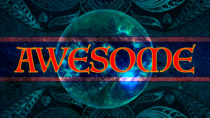Yeah, everything is boring. Streaming video, books, art—everything. It is the opposite of “everything is awesome” and, once again, it came about as a result of the internet attention economy. Or at least that is what Michelle Goldberg of the New York Times tells us, rounding up some thoughts from a literary critic as a first step and then jumping into some new social criticism that suggests the internet has ruined snobbery.
I was thinking back to the 1990s after I read the piece. I was a working computational linguist who dabbled in simulated evolution and spent time at Santa Fe Institute studying dreamy artificial life concepts. In my downtime I was in an experimental performance art group that detonated televisions and projected their explosions on dozens of televisions in a theater. I did algorithmic music composition using edge-of-chaos self-assembling systems. I read transgressive fiction and Behavioral and Brain Sciences for pleasure. I listened to Brian Eno and Jane Sibbery and Hole while reading Mondo 2000. My girlfriend and I danced until our necks ached at industrial/pop-crossover clubs and house parties. An early “tech nomad” visited us at one of our desert parties. Both in my Peace Corps service in Fiji and then traveling in Europe and Japan, I was without a cell phone, tablet, and only occasionally was able to touch email when at academic conferences where the hosts had kindly considered our unique culture. There was little on the internet—just a few pre-memes struggling for viability on USENET.
Everything was awesome.
But there was always a lingering doubt about the other cultural worlds that we were missing, from the rise of grunge to its plateau into industrial, and of the cultural behemoth cities on the coasts.… Read the rest
